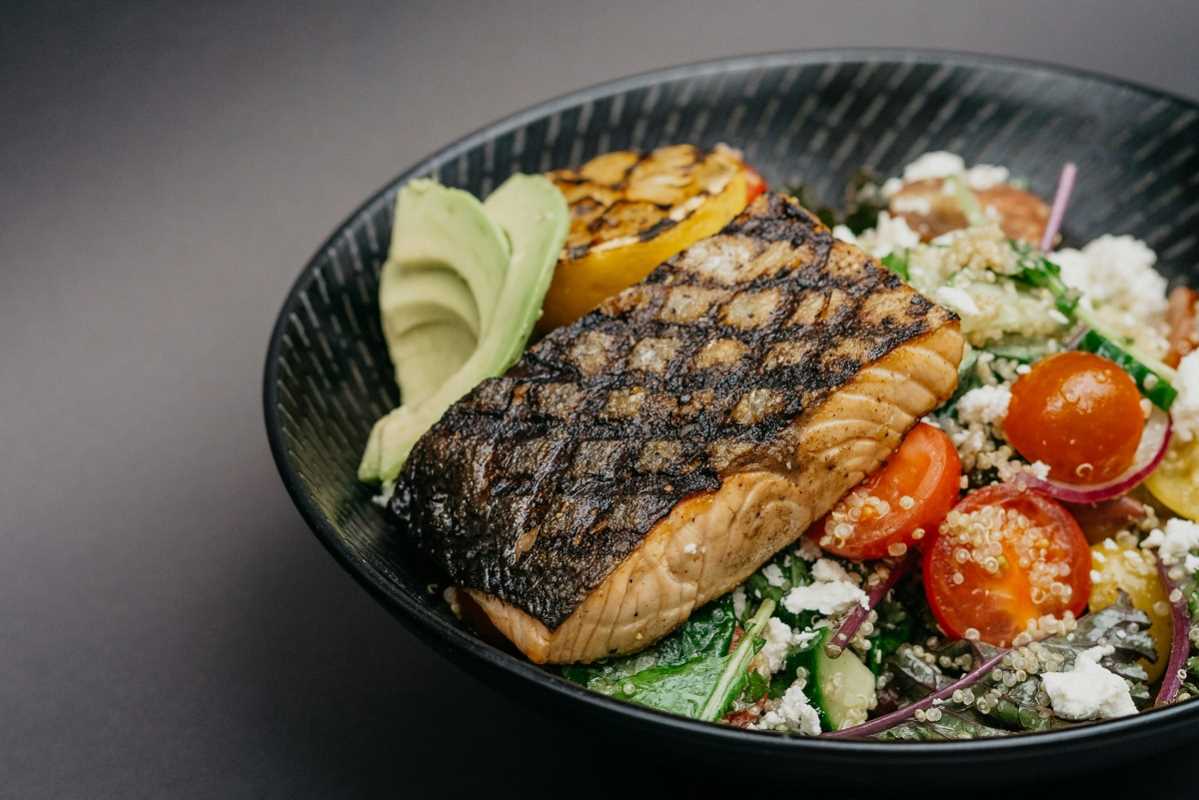Amaranth, an ancient grain brimming with protein, fiber, and essential nutrients, is an amazing addition to any diet. Perfect for anyone embarking on a health-focused lifestyle or seeking natural, nutritious foods, this tiny powerhouse offers clean energy and keeps you full for hours. It’s versatile, easy to prepare, and delicious, making it an ideal choice for beginner cooks and seasoned chefs alike. This guide will provide everything you need to know about cooking amaranth, along with some creative ways to integrate it into your meals.
What is Amaranth?
Before we get into cooking, let's explore what amaranth is and where it comes from. Amaranth is not technically a grain but a "pseudo-cereal," meaning it’s not part of the grass family like wheat or rice, yet it behaves like a grain in how it’s cooked and used. Native to the Americas, amaranth was a dietary staple of ancient civilizations such as the Aztecs and Incas, who revered it for its nutritional and spiritual significance. Today, amaranth is enjoying a resurgence, recognized globally for its health benefits and versatility.
Unlike many modern grains, amaranth is naturally gluten-free, making it a wonderful option for those with celiac disease or gluten sensitivity. Its nutty flavor and satisfying texture make it the perfect base for both sweet and savory dishes, transforming ordinary meals into nutrient-dense creations.
Key Nutrients in Amaranth
Amaranth's impressive nutritional profile sets it apart from other grains. Here’s why you should incorporate it into your meals:
- High Protein Content: Amaranth packs around 9 grams of complete protein per cooked cup. This means it contains all nine essential amino acids that your body cannot produce on its own.
- Rich in Fiber: A single serving provides nearly 20% of your daily fiber needs, supporting digestion and keeping you full longer.
- Micronutrient Powerhouse: Loaded with important vitamins and minerals such as magnesium (good for muscle and nerve function), calcium (essential for bone health), and iron (key for oxygen transport in the blood).
- Antioxidants: Amaranth contains compounds that combat free radicals, potentially reducing inflammation and bolstering your overall health.
Fun Fact
Amaranth is highly sustainable! It thrives in a variety of climates, grows quickly, and requires minimal water, making it a great crop for addressing food security challenges worldwide.
Tips for Cooking Amaranth
Cooking amaranth can feel like second nature once you understand the basics. Beyond its straightforward preparation, there are several tweaks and techniques you can employ to make the process even more rewarding. Here are some general tips to help you master cooking this tiny grain:
- Always Rinse Your Amaranth: Amaranth is naturally coated with saponins, which can lend it a slightly bitter taste. Rinsing the grains under cold water before cooking removes any unwanted flavors.
- Watch Your Liquid Ratio Carefully: Use 2.5 cups of water for every cup of dry amaranth. This ensures the perfect soft, slightly porridge-like texture without becoming too sticky.
- Low-and-Slow Cooking: Bring your amaranth and liquid to a boil, then immediately lower the heat to a gentle simmer. Over-boiling can lead to mushy or unevenly cooked grains.
- Fluff and Serve: Treat cooked amaranth like rice or quinoa by fluffing it gently with a fork before serving. This adds air to the grains and enhances the texture.
You can also toast amaranth in a dry skillet before adding liquid to give the grains a richer, nuttier flavor. If you have trouble adjusting to its natural slightly earthy taste, this step can significantly enhance its appeal.
Delicious Ways to Cook Amaranth
There’s no shortage of ways to use amaranth in your kitchen. Here are some simple, beginner-friendly ideas to get you started:
1. Basic Amaranth Porridge
A comforting breakfast porridge can turn amaranth into your morning staple. Plus, it’s endlessly customizable!
Ingredients:
- 1 cup amaranth
- 2.5 cups water or milk (dairy or plant-based)
- 1 tsp cinnamon
- Optional toppings such as honey, nuts, or fresh fruit
Instructions:
- Combine amaranth and liquid in a saucepan and bring to a boil.
- Reduce heat to low and simmer uncovered for 20 minutes, stirring occasionally to prevent sticking.
- Stir in cinnamon, sweeten with honey or maple syrup, and add toppings of your choice.
This porridge is not only satisfying but also keeps you energized throughout the morning. For a twist, try adding a spoonful of peanut butter or a sprinkle of chia seeds for extra protein and healthy fats.
2. Amaranth Pilaf
Amaranth pilaf makes a hearty accompaniment to grilled vegetables, chicken, or fish.
Ingredients:
- 1 cup amaranth
- 2.5 cups vegetable broth
- 1 onion (chopped)
- 1 bell pepper (diced)
- 1 clove garlic (minced)
- Fresh herbs (parsley, cilantro, or thyme)
Instructions:
- Sauté onion, bell pepper, and garlic in a small amount of olive oil until soft and fragrant.
- Stir in amaranth and broth, bringing the mix to a boil.
- Reduce heat and simmer for 20 minutes, allowing the amaranth to absorb the liquid fully.
- Sprinkle fresh herbs on top and serve warm.
This pilaf pairs wonderfully with spicy dishes, making it an excellent alternative to rice in meals like curry or stir-fry.
3. Popped Amaranth Snacks
Who doesn’t love a good crunchy snack? Popped amaranth is fun to make and can be used as a topping for yogurt or salads or eaten on its own.
Ingredients:
- 1/2 cup dry amaranth
Instructions:
- Heat a dry, heavy-bottomed skillet over medium-high heat.
- Add a tablespoon of dry amaranth at a time, covering the skillet and shaking it continuously for 10–15 seconds until the grains pop.
- Transfer popped amaranth to a bowl and repeat with the remaining grains.
For a treat, sprinkle the popped grains with a little cinnamon or a pinch of salt. Alternatively, mix them with melted dark chocolate for a unique, crispy dessert.
4. Protein-Packed Energy Bars
These no-bake energy bars are perfect for busy mornings or post-workout snacks.
Ingredients:
- 1 cup popped amaranth
- 1/2 cup peanut butter or almond butter
- 1/4 cup honey or maple syrup
- 1/4 cup dried cranberries, raisins, or mini dark chocolate chips
Instructions:
- Mix all ingredients in a bowl until evenly combined.
- Press the mixture firmly into a lined baking dish.
- Refrigerate for at least 1 hour, then slice into bars.
These energy bars are great for meal prep as they can be stored in an airtight container in the refrigerator for up to a week.
5. Amaranth Salad Topping
Cooked and cooled amaranth makes a fantastic topping for green salads. Toss it with leafy greens, avocado, cherry tomatoes, and vinaigrette. The grains provide a satisfying bite and boost of protein.
6. Amaranth Flour Recipes
Amaranth can be ground into flour for gluten-free baking. Try incorporating it into pancake batter, muffins, or even bread. Its earthy flavor works particularly well in savory baked goods.
Cultural Significance of Amaranth
Dating back over 8,000 years, amaranth has historical importance beyond nutrition. The Aztecs valued it so highly that they used it in ceremonies, creating elaborate figures from amaranth and honey or mixing it with human blood during rituals. Spanish conquistadors attempted to eradicate the crop as part of their colonization efforts, yet the resilient seeds survived. Indigenous farmers continued cultivating it, and today, it serves as a symbol of cultural endurance.
Amaranth also holds significance in Indian cuisine. Called "rajgira" or "ramdana," amaranth plays a key role in fasting rituals and is often prepared with ghee and sugar to create comforting sweets like laddoos.
This legacy as a sacred food and its ability to nourish communities across centuries highlight amaranth’s versatility and enduring value.
Pro Tips When Using Amaranth
- Mix and Match: Blend cooked amaranth with other grains like quinoa, millet, or bulgur for unique textures and flavors.
- Spice It Up: Whether you prefer sweet spices like vanilla and cardamom or savory ones like cumin and smoked paprika, amaranth absorbs flavors beautifully.
- Store Thoughtfully: Keep dried amaranth in an airtight container in a cool, dark place to preserve its freshness.
Amaranth is more than a grain substitute; it’s an opportunity to connect with ancient traditions while improving your health. Whether as a simple breakfast or an ingredient in inventive recipes, it fits seamlessly into a modern kitchen, offering rich history and wholesome nutrition in every bite.
 (Image via
(Image via




.jpg)
